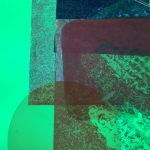In this post I discuss my understanding of the term ‘pedagogy’ and the ability for the process of documentation to act as a critical thinking tool to reconsider the assumptions, beliefs and practices that shape a learning environment.

‘Pedagogy: the principles, practice or profession of teaching.’ Collins Dictionary
‘The subject of children is not static or the same in every era because both the culture and society in which they form change very rapidly. Pedagogical and psychological knowledge should therefore always be open to channels for listening and interpreting and avoid becoming filters that are too short-sighted or opaque for reality to pass through.’ Vea Veechi
I remember having a conversation with a teacher-friend five or six years ago in which I distinctly recall saying, ‘I will never use the word pedagogy. I have only ever heard pretentious people say it in convoluted ways. The last thing the world needs is for the language and meanings of education theories to be presented as high-brow and inaccessible’.
Fast forward to last week. I was giving a talk to a group of architects on pedagogical documentation as a tool for learning and change in art museums. The first question asked after the presentation was, ‘this may sound silly, but what exactly does pedagogy mean?’ My mind flashed back to the conversation from a few years ago – gah! I had become everything I thought I would never be… a person who uses the word pedagogy. How did this happen? Well, let me explain.
Prior to starting my PhD, I often used the words ‘learning’ and ‘education’ to describe the different processes happening in the art museums where I was employed. A few months into my doctorate I realised that these words were limited when trying to consider the wider context of children’s experiences. I then started reading up on different meanings and understandings of pedagogy. I found many of these surprisingly useful in expanding my thinking around children and art. Now I use it all the time, including in my blog title. I sometimes cringe to think that it might come across as pompous. At the same time it is the correct word for what I am trying to think more deeply about.
My current understanding of the term has been influenced by the definition provided by Thomson et al. (2012) in ‘The Signature Pedagogies Project.’ In this, pedagogy is described as the ‘shaping of the learning environment as a whole’. It is viewed as the combination of teaching methods, curriculum, assessment practice and how these are created into patterns of interactions, actions and activity in a particular context.
This description emphasises the ‘relationships, conversations, learning environments, rules, norms and culture within the wider social context’ (Ibid, p.8). It implies that pedagogies consists of intertwining connections between both people and things in a specific social, historical, political and cultural context. This also suggests that such forces are not fixed but rather constantly changing, recombining and multiple.
Siraj-Blatchford (2002) extends on this through stating that it is the quality of interactions between a learning environment’s components that give significant insight into the depth of early childhood education experiences.
Questions relating to a learning environment’s pedagogies could be as follows:
- What are the concepts and content being taught?
- How is this being done, for example what are the methods?
- What learning strategies are being produced by learners?
- How do we know that learning is taking place?
- How do all of these forces come together at different moments to shape how, what and why a learner learns?
- What are our assumptions and beliefs that shape such understandings of learning?
I personally do not believe such questions are reserved for formal education settings and that museum teams can also benefit from continuous critical thinking around these ideas. The process of documentation can support such investigations when used by teams as a mean to consider, challenge and transform the assumptions, beliefs and understandings that shape a learning context. Many of these assumptions are formed and maintained implicitly and therefore require active debate, visbility and questioning from multiple perspectives to explore the complexity of practices. Or as Lenz-Taguchi (2009) describes, the process of documentation becomes a pedagogical one when it is used as a tool for learning and change. This then allows for the production of new theories, ideas and alternate ways of thinking about early childhood education practices.
References
Lenz-Taguchi, 2009. Going Beyond the Theory/Practice Divide in Early Childhood Education (Contesting Early Childhood). Oxon: Routledge.
Siraj-Blatchford, I., Sylva, K., Muttock, S., Gilden, R., & Bell, D. (2002). Researching effective pedagogy in the early years (REPEY). London: HMSO.
Thomson, P., Hall, C., Jones, K., & Sefton-Green, J. (2012). The Signature Pedagogies project: Final report, Culture, Creativity and Education.
Vecchi, V. (2010). Art and creativity in Reggio Emilia: Exploring the role and potential of ateliers in early childhood education, London: Routledge. p.49




